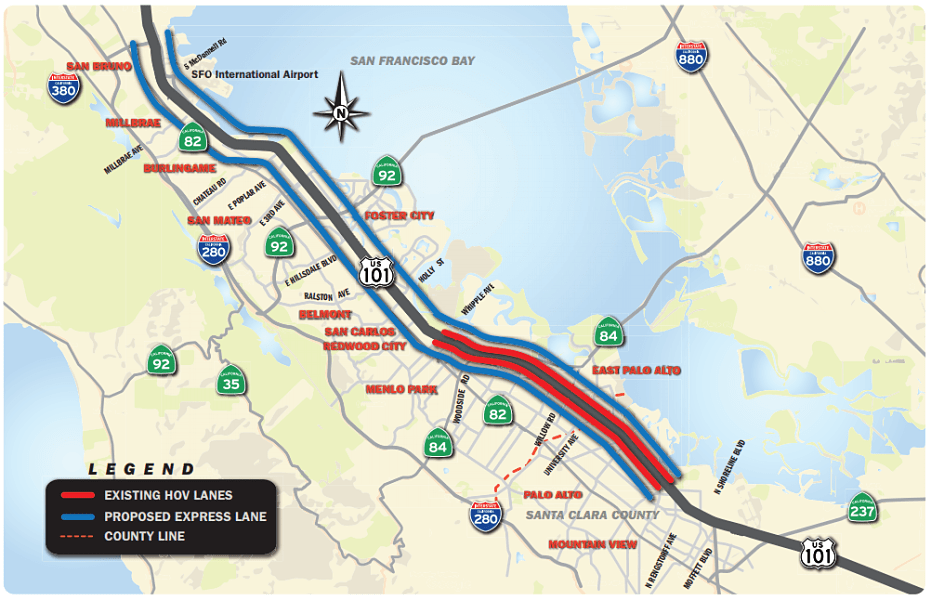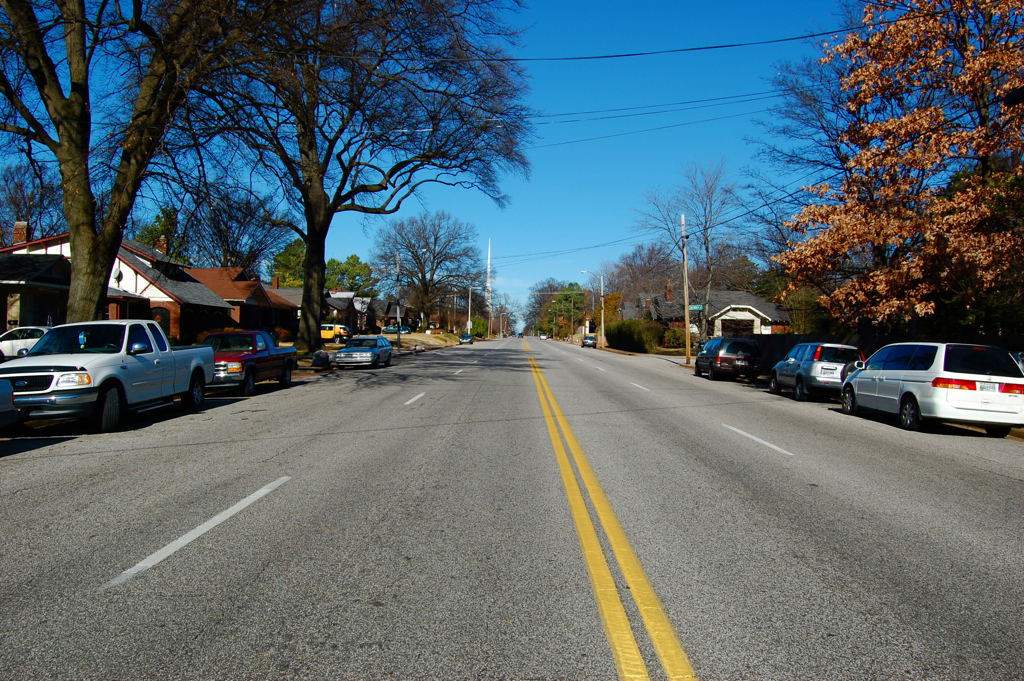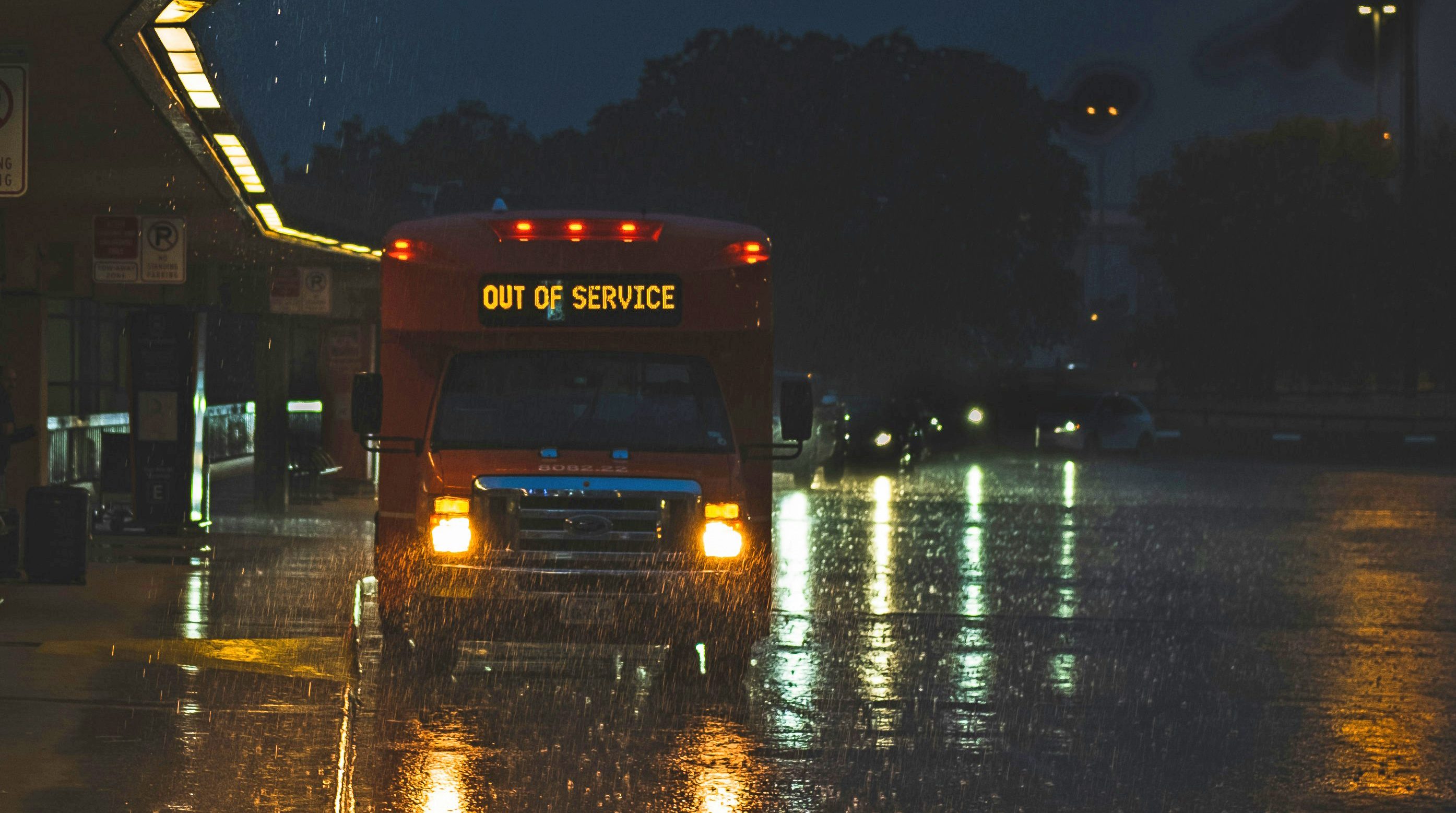In their fourth Highway Boondoggles report, U.S. PIRG and the Frontier Group profile wasteful highway projects that state DOTs are building across the country. Today's boondoggle: the expansion of U.S. Highway 101 in San Mateo, California. Widening U.S. 101 will bring more cars into an already congested area, while conflicting with California’s climate goals.
Highway 101 in the San Mateo area has suffered from congestion for decades and has undergone many projects to add road capacity – including seven projects to add auxiliary lanes since 1997. Yet today, congestion is as bad as ever, often slowing to a crawl at rush hour.
Years of widening projects with little impact signal that a new approach is necessary. Once again, however, the California Department of Transportation (Caltrans) is planning to address congestion with a highway expansion. The plan is to add an express lane – in which single- and double-occupancy vehicles pay a demand-based toll – on both sides of the existing highway. In total, the project would add more than 22 miles of new lanes, at a total cost of $534 million.
The project is at direct odds with California’s goal to reduce global warming pollution 80 percent below 1990 levels by 2050. Achieving that goal will almost certainly require dramatic reductions in transportation emissions, which account for 39 percent of state global warming emissions, far more than any other sector of the economy.
Demand pricing can be an effective way to reduce congestion and pollution – yet because the Highway 101 project also increases total vehicle capacity, it will also result in more driving and more emissions. According to Caltrans’ estimates, the expanded highway will see 70 million additional vehicle miles traveled and an additional 40,000 metric tons of global warming emissions per year compared to the “no build” scenario.
Meanwhile, funding is needed for projects that could actually help California achieve its climate goals by giving commuters options beyond driving. Such projects include much-needed transit improvements in San Mateo country, including an increase in SamTrans bus service, and upgrades to CalTrain’s facilities. Such projects would also align with the priorities of local residents: San Mateo residents who responded to a recent survey indicated that they would prefer congestion solutions that take cars off the road, rather than add road capacity.
The project will also take money away from road and bridge repairs. Nearly 70 percent of California roads are in poor or mediocre condition, seventh-worst in the country. And nearly 30 percent of bridges are structurally deficient or functionally obsolete.
California has many options for building a more sustainable transportation system. But building new lanes on Highway 101 will only further entrench driving as the region’s dominant mode of transportation, bringing more driving and more cars – and likely more proposals for new lanes in the years to come.






